#chemotherapy and radiation therapy
Explore tagged Tumblr posts
Text

I went through both chemotherapy and radiation therapy at the age of 5. The cancer and tumor I had could have killed me without the use of medical science. I also had about 11 years of remission, and everything is cleared.
I understand that taking care of yourself naturally is important, but without medical science and skilled doctors, i would have died. I'm not saying don't do natural remedies, but don't doubt medical science either.
But again, there's gonna be people who are gonna tell me I'm going to die because of my treatments.
#just because something isn't “holistic” doesn't mean it will kill you#take care of yourself naturally sure but medical science IS REAL.#social media#medical science#2024#july#tumor#chemotherapy#radiation therapy#cancer
16 notes
·
View notes
Text
Hannah's Treatment
(Continued from Hannah's Surgery Series)
Following her Ovarian Cancer diagnosis, Hannah was immediately admitted to the hospital's Oncology Center as a long-term inpatient case. A few days after her surgery, where she underwent a radical hysterectomy without consent, she met with her surgeon and a gynecological oncologist to discuss her treatment options. She was prescribed an intensive chemotherapy and radiotherapy treatment regimen, with chemo four days a week and lengthy radiation treatments on the three days in between. She was also informed about the painful side affects of chemotherapy and radiation therapy that we she would experience. Another side affect would be losing her hair and going bald. Despite being scared and overwhelmed, Hannah signed the consent forms in order to undergo the treatment plan.
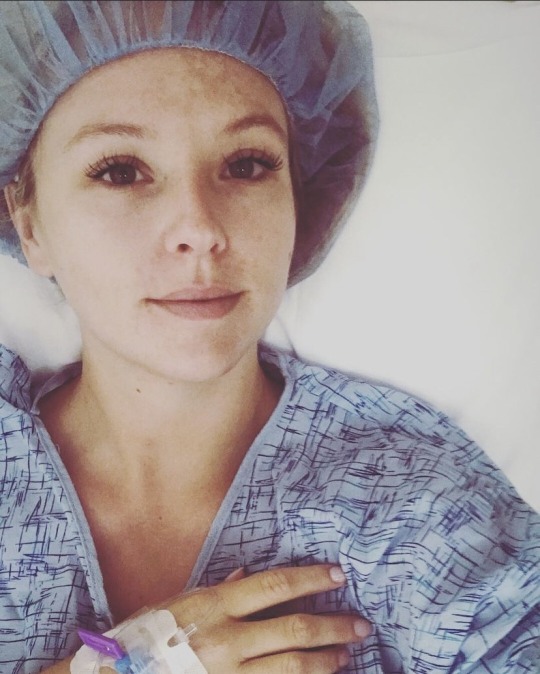
The first step in her treatment plan involved undergoing a radiation 'simulation' in order to find and mark the correct positioning for her body to undergo pelvic and chest radiation. She was placed on the table, moved in position, and her abdomen and pelvic area were marked with small tattoos to indicate where the radiation beams would be.
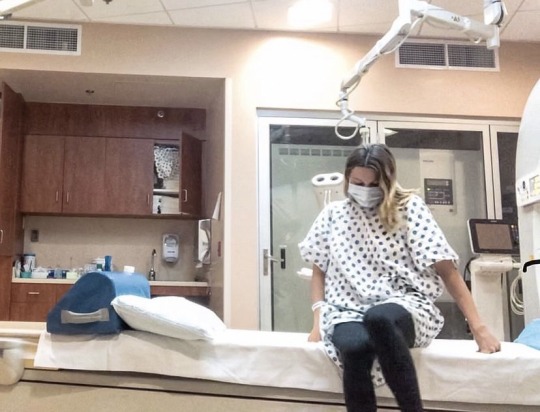
The next phase of her pre-treatment process would be to undergo a brief surgery to have a chemo port placed inside her chest in order for chemotherapy to be administered directly into her chest and bloodstream. When the surgery was finished, Hannah felt a small lump in her chest where the port was placed. It was still very sensitive to the touch. Hannah was forced again to reckon with the reality of her situation although it was necessary in order to save her life.

A week after her initial surgery and diagnosis, Hannah's Ovarian Cancer Treatment was set to begin. Shortly after woke up in the morning, an oncology nurse, wearing a surgical gown, gloves, and a surgical scrub cap entered the room.
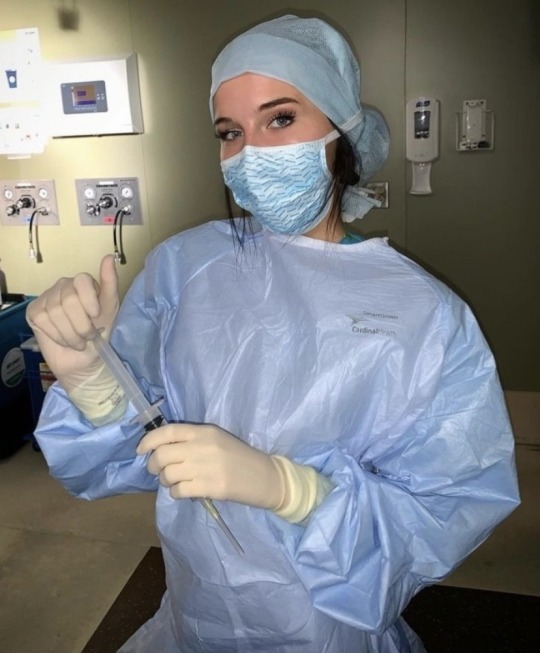
The nurse proceeded to clean and prep the port area, hang the chemotherapy IV bag, and then connect it to the port in her chest. Hannah winced in pain briefly as the IV was attached to the port. Once this was complete, the nurse began the IV drip and the very first drops of chemo drugs entered her body. She gulped slowly as the IV began to flow. Hannah realized once again that her life would never be the same. The oncology nurse reassured her that everything would be okay, that it was a necessary treatment, and that it was all for the best.
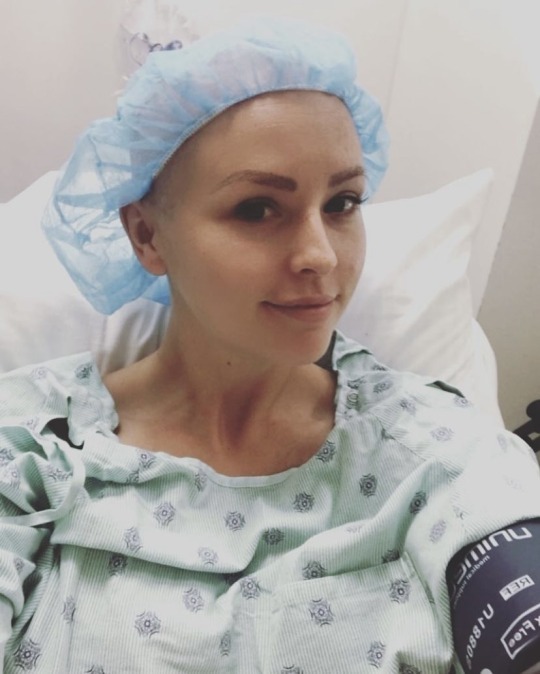
The next day, after her first chemo session, Hannah would undergo her first of many radiation therapy treatments. She was taken to the radiology center, lied down on the table, and was strapped in place. The fear once more set in as she found herself immobilized on the table. The table was then moved into position and the radiation beams were activated. She stayed perfectly still, knowing that the slightest movement would result in unnecessary radiation exposure. As the treatment continued, Hannah finally came to terms with her new reality. From this point on, chemo and radiation therapy treatments each day would define her existence going forward.

As the treatments continued for days and weeks, Hannah quickly began to lose her hair and feel the side affects of the treatment. While extremely upsetting, she was always reassured by the oncology team that was for her own good. This new and painful reality was now her life.
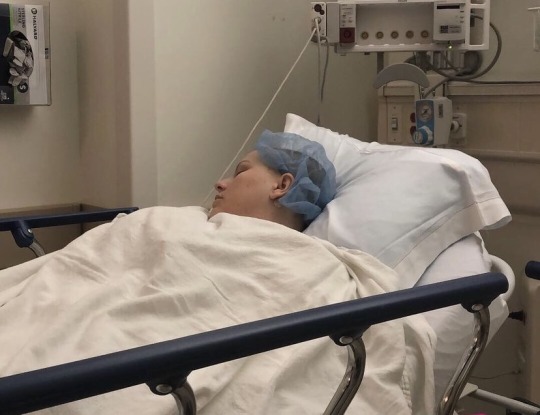
#surgery #surgical #surgicalgloves #surgicalcap #surgicalprocedure #surgicalscrubs #medicalgloves #scrubs #hijab #medicalhijab #muslimdoctor #medicalprocedure #hospitalpatient #cancertreatment #bouffantcap #medicalfetish #surgeryfetish #surgicalfetish #anesthesiafetish #anesthesia #medical
#surgery#surgicalfetish#surgicalnurse#surgical mask#chemotherapy#radiation therapy#radiation treatment#radiation oncologist
36 notes
·
View notes
Text
Not sure if anyone still follows me on this thing but I need help sharing my father’s fundraiser to help with medical costs for his cancer treatment. He is having surgery tomorrow to remove his tonsils in preparation for radiation.
If you see this, like just literally see it a simple share would mean everything. Thank you so much.
Also this is not a scam! I am just really trying to help my dad out, he has so much on his plate I’d like to lighten his load and much as I can
#fuck cancer#mutual aid#crowdfunding#fundrasier#fundraising#blacklivesmatter#public health#black fathers#i love you#cancer#radiation#chemotherapy#health#wellness#please share#cats of tumblr#healing#spirituality#reiki therapy#not a scam
10 notes
·
View notes
Text
Lung transplant patients can develop lung cancer. While the risk is relatively low compared to other complications, it is higher in lung transplant recipients than in the general population. Several factors contribute to this increased risk, including:
Immunosuppressive Medications: Transplant recipients must take medications to suppress their immune system to prevent organ rejection. These medications can reduce the body's ability to detect and fight cancer cells.
Chronic Inflammation: Lung transplant recipients often experience chronic inflammation in their transplanted lungs, which can contribute to the development of cancer over time.
Prior Lung Conditions: Many individuals who receive lung transplants have pre-existing lung conditions, which may already increase their risk of lung cancer.
Regular medical check-ups and cancer screenings are essential for lung transplant recipients to detect any potential cancer at an early, treatable stage. Monitoring for signs and symptoms of lung cancer and adhering to a doctor for cancer screening can help manage this risk.
What are the different types of lung infections?
There are various types of lung infections, which can affect different parts of the respiratory system. Some common lung infections include:
Pneumonia: This is an infection that inflames the air sacs in one or both lungs. It can be caused by bacteria, viruses, or fungi.
Bronchitis: Bronchitis is an inflammation of the bronchial tubes, often caused by viruses. Chronic bronchitis can be associated with smoking.
Tuberculosis (TB): TB is a bacterial infection caused by Mycobacterium tuberculosis that primarily affects the lungs but can also affect other parts of the body.
Influenza (Flu): Influenza is a viral respiratory infection that can cause fever, cough, and other respiratory symptoms.
Bronchiolitis: This is usually a viral infection that affects the small airways (bronchioles) in the lungs, often seen in infants and young children.
Lung Abscess: A lung abscess is a collection of pus within the lung tissue, usually caused by bacterial infection.
Pertussis (Whooping Cough): Pertussis is a highly contagious bacterial infection that can lead to severe coughing fits and affects the respiratory system.
Fungal Lung Infections: These can be caused by various types of fungi and can range from mild to severe, often affecting people with weakened immune systems.
Cystic Fibrosis Lung Infections: People with cystic fibrosis are prone to recurring lung infections due to thick and sticky mucus in the airways.
Aspergillosis: This is a fungal infection that can affect the lungs, particularly in individuals with weakened immune systems.
Consultation at the best hospitals like Indraprastha Apollo Hospitals, including oncologists and surgeons, is essential for personalised treatment recommendations. One must consult here to know more about lung cancer treatment, procedure of lung cancer treatment, cost of lung cancer treatment in Delhi.
#health#lung cancer treatment#lung cancer surgery#lung cancer#cancer surgery#surgery#cancer treatment#chemotherapy#radiation therapy
2 notes
·
View notes
Text
Hear this and watch it in its entirety. Chris is a cancer survivor who, like my mom, educated himself and has healed naturally. The corruption he speaks of is why I left nursing school to become a nutritionist. I mean no offense to nurses. I can appreciate the sacrifice and service. I especially appreciate the nurses trying to bridge the gap between medicine and nutrition. For me, nursing wasn’t a good fit. As I was shadowing in hospitals, it became clear that I would not be on the proactive side of health, like I intended. Once I started studying nutrition and its powerful healing effects on the human body, I became enamored. I haven’t looked back since and I will continue to do my part in getting this information out. You are only being told one side, but it’s a human right to know ALL of your healthcare, preventative, and treatment options.
#cancer #chemotherapy #radiation #health #cancertherapy #inegrativenutrition #integrativemedicine #cancerfighting #cancersupport #cancercare #cancertreatment #holistichealth #holistichealing #hyperbaricoxygentherapy #vitaminctherapy #holistictherapies #healthy #health #healthychoices #healthyliving #healthylife #healthybody #healthcare #nutrition #HealthyDiet #infrared #integrativenutrition #nutritionist #integrativenutritionist #healthtips
#cancer#anticancer#chemo#chemotherapy#radiation#healthcare#Health care#health#cancer therapy#integrative medicine#Nutrition#diet#exercise#cancerfighting#cancer support#cancer care#integrative health#integrative nutrition#integrativenutrition#holistic#holistic approach#holistic healing#healthy lifestyle#healthy choices#Healthy living#healthy diet#Disease#disease fighting#disease management
3 notes
·
View notes
Text
Good Times was on at 2 am, I woke up and put on the oldies channel GetTV just for ambient TV noise.
But this episode' scene, "Love Has a Spot On Its Lung Part 2" really hit me hard in the heart.
With my mom's aggressive uterus cancer, her upcoming chemo & radiation.
When Bookmaker said, "Stop planning to die and start planning to live."
You gotta keep saying to yourself every day, "I'm gonna make it. It can't happen to me. I ain't gonna die. I'm gonna live, I'm gonna live."
Small reminders of our goal toward living beyond this cancer comes from unexpected places.
#GOOD TIMES#LOVE HAS A SPOT ON ITS LUNG#Johnny Brown#Moses Gunn#Cancer#Chemotherapy#Radiation Therapy#Lung Cancer#1970s#Sitcom#MAUDE#ALL IN THE FAMILY#i don't usually watch 'Good Times' but it was on in the background and every show with cancer in it keeps coming up lately...#John Wayne#American Cancer Society
5 notes
·
View notes
Text

0 notes
Text
Brain Tumor Treatment in Meerut: Advanced Care at Valentis Cancer Hospital for Hope and Healing
Advanced Brain Tumor Treatment in Meerut: Expert Care at Valentis Cancer Hospital
A brain tumor diagnosis can feel overwhelming, but the right treatment and expert care can make all the difference. For those seeking top-tier Brain Tumor Treatment in Meerut, Valentis Cancer Hospital stands as a beacon of hope. Known for its cutting-edge technology and compassionate care, Valentis Cancer Hospital provides comprehensive treatment options tailored to each patient’s unique needs.
Why Choose Valentis Cancer Hospital for Brain Tumor Treatment?
Valentis Cancer Hospital has established itself as a leader in cancer care in Meerut. Its multidisciplinary approach brings together neurosurgeons, oncologists, radiologists, and support staff to ensure every patient receives personalized, holistic care. The hospital is equipped with the latest diagnostic and treatment technologies, offering the most advanced options available for brain tumor management.
Comprehensive Brain Tumor Treatment Options
Advanced Diagnostic Techniques Early and accurate diagnosis is critical for effective treatment. Valentis Cancer Hospital uses advanced imaging techniques such as MRI, CT scans, and PET scans to detect and assess brain tumors with precision.
Surgical Excellence For many brain tumors, surgery is the primary treatment option. Valentis offers minimally invasive and precision-guided surgical techniques, ensuring the safe removal of tumors while preserving healthy brain tissue.
Radiation Therapy The hospital’s state-of-the-art radiation therapy targets tumors with pinpoint accuracy, minimizing damage to surrounding tissues. Techniques like stereotactic radiosurgery (SRS) provide high-dose radiation in fewer sessions for faster results.
Chemotherapy & Targeted Therapy Valentis provides personalized chemotherapy plans and the latest in targeted therapies, attacking cancer cells while sparing healthy ones. These advanced treatments are tailored to the type and stage of the tumor.
Immunotherapy Harnessing the power of the immune system, immunotherapy is a cutting-edge treatment option available at Valentis, offering new hope for patients with aggressive or recurrent brain tumors.
Rehabilitation & Supportive Care Recovery is about more than just treating the tumor. Valentis offers comprehensive rehabilitation services, including physical therapy, speech therapy, and psychological support, to help patients regain their quality of life.
What Sets Valentis Cancer Hospital Apart?
Multidisciplinary Team: A team of highly skilled specialists collaborates to provide the best possible care.
State-of-the-Art Technology: Equipped with the latest diagnostic and treatment tools for precision care.
Patient-Centered Approach: Personalized treatment plans tailored to each patient's unique needs.
Comprehensive Care: From diagnosis to recovery, Valentis offers end-to-end care, including emotional support and rehabilitation.
Signs You Shouldn’t Ignore
Early detection of brain tumors can improve outcomes. If you or a loved one experience any of the following symptoms, seek medical attention promptly:
Persistent headaches, especially in the morning
Nausea or vomiting without clear cause
Seizures or convulsions
Vision problems or blurred vision
Difficulty speaking, memory loss, or confusion
Weakness in the limbs or coordination issues
Trust Valentis Cancer Hospital for Brain Tumor Treatment in Meerut
Valentis Cancer Hospital is dedicated to providing world-class Brain Tumor Treatment in Meerut, ensuring that patients receive the most advanced care with compassion and expertise. If you or a loved one is facing a brain tumor diagnosis, know that expert care and hope are just a call away.
Take the first step toward better health. Reach out to Valentis Cancer Hospital for a consultation and experience care that’s both advanced and compassionate.
Contact Valentis Cancer Hospital Today for Expert Brain Tumor Care! Your health deserves the best—trust Valentis for cutting-edge treatment and personalized care.
#Brain tumor treatment in Meerut#Valentis Cancer Hospital Meerut#Brain tumor care Meerut#Advanced cancer treatment Meerut#Brain cancer treatment Meerut#Neurosurgery in Meerut#Radiation therapy for brain tumors#Chemotherapy in Meerut#Targeted therapy for brain tumors#Immunotherapy for brain cancer#Brain tumor specialist Meerut#Minimally invasive brain tumor surgery#Cancer rehabilitation Meerut#Brain tumor diagnosis Meerut#Comprehensive brain tumor care
0 notes
Text

LIVE: TVUP Health Updates
October 4, 2024 (Friday) 12nn
Webinar #212 -- Colon Cancer: Prevention, Detection, and Management
Colon cancer is the 3rd leading cause of cancer worldwide.
Typically, it affects people 50 and older.
However, colon cancer rates for those 18-35 have been on the rise in recent years.
#cancer #coloncancer #RadiationTherapy #Chemotherapy
https://www.youtube.com/live/2yICyrwEnTo?si=JkEcpeAUFYHOpxKJ
0 notes
Text
youtube
#Ferroptosis cancer therapy#multimodal cancer treatment#iron-dependent cell death#lipid peroxidation#oxidative stress in cancer#GPX4 inhibition#ferroptosis inducers#iron metabolism in cancer#nanotechnology in cancer therapy#synergistic cancer therapies#cancer cell death mechanisms#tumor suppression via ferroptosis#antioxidant defense inhibition#reactive oxygen species#cancer drug delivery systems#chemotherapy and ferroptosis#radiation therapy synergy#ferroptosis sensitizers#iron overload in cancer cells#oxidative damage in cancer treatment.#Youtube
0 notes
Text
Colon cancer treatment options include:
Surgery: Removes cancerous parts of the colon. Chemotherapy: Uses drugs to kill cancer cells. Radiation Therapy: Targets cancer cells with high-energy rays. Targeted Therapy: Focuses on specific cell changes. Immunotherapy: Boosts the immune system to fight cancer cells.
#Colon cancer treatment options include:#Surgery: Removes cancerous parts of the colon.#Chemotherapy: Uses drugs to kill cancer cells.#Radiation Therapy: Targets cancer cells with high-energy rays.#Targeted Therapy: Focuses on specific cell changes.#Immunotherapy: Boosts the immune system to fight cancer cells.
0 notes
Text
Bone Cancer Drugs Market is driven by growing demand for targeted therapies
The global Bone Cancer Drugs market is primarily driven by the increasing prevalence of cancer including bone tumor or bone cancer. Bone cancer drugs help in treating cancer that starts in the bones, such as osteosarcoma or Ewing's sarcoma. Bone cancer drugs include molecular target drugs, chemotherapy and others that help inhibit or block the growth of cancer cells. Bone cancer drugs are used for treating primary bone tumors and metastatic bone tumors. Primary bone tumors start within the bones whereas metastatic bone tumors spread to the bones from other parts of the body. Bone cancer drugs block the growth of cancer cells by interfering with cell division or inducing cell death. The increasing adoption of targeted therapies including monoclonal antibodies and small molecule inhibitors are helping treat various types of cancers more efficiently with lesser side effects. The growing prevalence of bone cancer coupled with availability of advanced targeted therapies are the major factors driving the growth of the global bone cancer drugs market.
The Global Bone Cancer Drugs Market is estimated to be valued at US$ 1423.67 Mn in 2024 and is expected to exhibit a CAGR of 5.2% over the forecast period 2024 to 2031. Key Takeaways Key players operating in the Bone Cancer Drugs market are Advaxis, Inc., Cellectar Biosciences, Inc., OPKO Health, Inc., Pfizer Inc., Amgen Inc., Novartis AG, Eli Lilly and Company, Debiopharm Group, Merck Co, Bayer AG, Bristol-Myers Squibb Company, Takeda Pharmaceutical, F. Hoffmann-La Roche Ltd and Teva Pharmaceutical. The demand for bone cancer drugs is increasing globally due to rising prevalence of primary bone tumors as well as bone metastasis. According to cancer research UK, around 2,300 new bone cancer cases are reported each year in the UK. The increasing incidences of bone metastasis from cancers originating in breasts, lungs and prostate is a major factor driving the Bone Cancer Drugs Market Size. According to American Cancer Society, over 170,000 new cases of breast cancer are expected to be diagnosed in 2021 in the US, out of which approximately 40,000 will develop bone metastases. The global companies are expanding their presence into emerging markets of Asia Pacific, Middle East and Latin America to tap the growth opportunities in these regions. Market key trends The Bone Cancer Drugs market is witnessing trend of availability of personalized medicines. With advancement in understanding of genetics and specific mutations driving cancers, targeted therapies are being developed that can identify unique mutations in an individual patient's cancer and target them precisely. This enables delivering the right treatment to the right patient and optimizing treatment outcomes. Companies are investing heavily in development of novel targeted therapies and companion diagnostics that help deliver personalized cancer care. This trend is expected to significantly influence the bone cancer treatment landscape and support market growth over the forecast period. Porter’s Analysis Threat of new entrants: High research and development costs and regulatory barriers related to clinical trials make it difficult for new companies to enter the bone cancer drugs market. Bargaining power of buyers: Patients have limited bargaining power due to serious nature of disease. However, availability of alternative treatment options provide some bargaining power. Bargaining power of suppliers: Established drug manufacturers have significant bargaining power due to their large product portfolios and scarce manufacturing capabilities. Threat of new substitutes: Alternatives like chemotherapy and radiation therapy impose a moderate threat as bone cancer drugs aim to target tumors specifically. Competitive rivalry: Potential for high profits drives major pharmaceutical companies to intensely compete through intensive research and clinical trials. Geographically, North America is currently dominating the bone cancer drugs market in terms of value owing to high prevalence, increasing healthcare expenditure and presence of major players. The market in Asia Pacific is projected to witness the fastest growth over the forecast period due to growing healthcare infrastructure, large patient pool and rising disposable income in developing countries. Another major geographical region concentrated with bone cancer drugs market is Western Europe. Countries like Germany, United Kingdom and France collectively account for highest market share due to well-developed healthcare systems and availability of favorable reimbursement policies.
Get more insights on Bone Cancer Drugs Market
Discover the Report for More Insights, Tailored to Your Language
French
German
Italian
Russian
Japanese
Chinese
Korean
Portuguese
About Author:
Ravina Pandya, Content Writer, has a strong foothold in the market research industry. She specializes in writing well-researched articles from different industries, including food and beverages, information and technology, healthcare, chemical and materials, etc. (https://www.linkedin.com/in/ravina-pandya-1a3984191)

#Coherent Market Insights#Bone Cancer Drugs Market#Bone Cancer Drugs#Osteosarcoma Treatment#Bone Metastasis#Cancer Therapy#Chemotherapy#Targeted Therapy#Radiation Therapy#Bisphosphonates#Immunotherapy#Bone Tumors
0 notes
Text
How to increase platelet count? | SecondMedic
Some methods include consuming vitamin K-rich foods, increasing intake of iron and omega-3 fatty acids, and avoiding alcohol consumption.
#platelet count#hematologist#iron#B vitamins#and vitamin C#medications#chemotherapy or radiation therapy
0 notes
Text
What to Expect During and After a Portacath Procedure

A portacath is a small, implantable device that plays a significant role in delivering chemotherapy effectively, making the treatment process more manageable for patients. In this blog, I’ll explain what a portacath is, how it facilitates the administration of chemotherapy, and what one can expect during and after the procedure.
What is a Portacath?
A portacath, short for "portable catheter," is a small medical device implanted beneath the skin, usually in the chest area, for the purpose of administering medications, including chemotherapy, and drawing blood. It consists of two main components:
Port: The port is a small, round reservoir made of biocompatible materials, such as silicone or titanium. It has a self-sealing septum on its surface, which allows for repeated needle access without damaging the device.
Catheter: A thin, flexible tube that extends from the port into a large vein, typically the superior vena cava, which is a large vein near the heart. This positioning ensures that medications are quickly and efficiently delivered to the circulatory system.
How a Portacath Helps Administer Chemotherapy
Direct Access to the Bloodstream:
The catheter of the portacath is connected to a major vein, typically the superior vena cava near the heart. This provides direct access to the bloodstream, enabling chemotherapy drugs to be administered directly into the circulatory system.
Minimized Discomfort and Tissue Damage:
Unlike traditional intravenous injections, where veins may become damaged or uncomfortable over time, a portacath minimizes discomfort and tissue damage. The reservoir provides a stable access point for repeated administrations of chemotherapy and other medications without the need for multiple needle sticks.
Versatility and Convenience:
The portacath can be accessed easily using a specialized needle, allowing healthcare professionals to administer chemotherapy, draw blood, or deliver other medications. This versatility makes it a valuable tool for those undergoing cancer treatment.
What to Expect During a Portacath Procedure
Local Anesthesia:
The procedure usually involves the administration of a local anesthetic to numb the area where the portacath will be placed. This ensures minimal discomfort during the insertion process.
Insertion of the Portacath:
The portacath is inserted through a small incision made in the chest. The catheter is threaded into a large vein, and the reservoir is positioned under the skin.
Closing the Incision:
Once the portacath is in place, the incision is closed, and appropriate dressing is applied.
After the Portacath Procedure
Recovery:
You may experience some mild soreness or bruising at the insertion site, which should subside in a few days. Your healthcare team will provide instructions on how to care for the portacath site.
Portacath Access:
Following the procedure, your healthcare team will teach you or a caregiver how to properly access and care for the portacath. This will involve learning how to clean the site, flush the portacath, and safely use it for chemotherapy or other treatments.
Regular Check-ups:
You will have regular check-ups with your healthcare team to ensure the portacath is functioning correctly and to address any concerns or complications.
In conclusion, a portacath is a valuable tool for the administration of chemotherapy and other medications. Its design allows for a smoother treatment experience and improved quality of life during the challenging journey of cancer treatment. Your healthcare team should be able to provide you with more information and answer specific questions concerning this procedure prior to treatment.
#cancer#chemotherapy#eastwestintegrativeoncology#integrative oncology#yourcancerguru#immunotherapy#portacath#port#cancer treatment#radiation therapy
0 notes
Text
A splenectomy is a surgical procedure to remove the spleen. The spleen is an organ located in the upper left part of the abdomen, under the rib cage. It plays several roles in the body, including:
Filtering Blood: It removes old and damaged red blood cells from the bloodstream.
Fighting Infection: It helps produce white blood cells and stores them, contributing to the body's immune response.
Storing Blood: It stores blood and platelets, which are vital for clotting.
Indications for Splenectomy
A splenectomy may be performed for various reasons, including:
Trauma: Severe injury to the spleen causing internal bleeding.
Blood Disorders: Conditions like idiopathic thrombocytopenic purpura (ITP), hereditary spherocytosis, and thalassemia.
Cancers: Certain cancers like lymphoma or leukemia affecting the spleen. ( Know more about- What is Lymphoma? )
Infections: Rare infections that do not respond to other treatments and cause splenic abscesses.
Other Conditions: Enlarged spleen (splenomegaly) causing discomfort or other complications.
Types of Splenectomy
Open Splenectomy: A large incision is made in the abdomen to remove the spleen. This method is typically used in emergency situations or when the spleen is very large.
Laparoscopic Splenectomy: A minimally invasive approach using small incisions and a camera to guide the surgery. This method usually results in quicker recovery and less pain.
Risks and Complications
While generally safe, splenectomy carries risks, such as:
Infection
Bleeding
Pancreatitis (inflammation of the pancreas)
Blood clots
Long-term, individuals without a spleen are more susceptible to infections, particularly from encapsulated bacteria like Streptococcus pneumoniae. Vaccinations and prophylactic antibiotics are often recommended to mitigate this risk.
Postoperative Care
Post-surgery, patients typically require:
Pain management
Monitoring for signs of infection or complications
Vaccinations to protect against certain infections
Possible antibiotic prophylaxis, particularly in the early months or years post-surgery
Conclusion
A splenectomy can be a life-saving procedure with numerous indications, primarily related to trauma, blood disorders, or malignancies. Despite its risks, the procedure can effectively address the underlying issues necessitating the removal of the spleen, leading to improved patient outcomes when appropriately managed.
Get a splenectomy done at the best hospitals in Mumbai like H N Reliance Hospital.
0 notes
Text

Exploring Cancer Rehabilitation:
Cancer rehabilitation, a specialized sector within physiotherapy, adopts a holistic approach to patient care that extends beyond traditional physical therapy boundaries. It encompasses a wide range of interventions aimed at easing the adverse effects of cancer and its treatments, improving physical function, and enhancing overall well-being. Grounded in evidence-based practice and personalized to each patient's needs, cancer rehabilitation is a key component of supportive care in oncology.
Managing Treatment Side Effects:
The array of cancer treatments, while crucial in fighting the disease, often leads to various side effects that significantly affect patients' health. Chemotherapy, known for targeting cancer cells effectively, can cause severe fatigue, neuropathy, and musculoskeletal pain. Radiation therapy, vital for tumor eradication, may result in skin problems, lymphedema, and reduced range of motion. Surgical procedures, although necessary for tumor removal, often lead to complications such as weakness, mobility issues, and lymphatic problems.
In addressing these challenges, physiotherapy plays a critical role in alleviating treatment-related side effects and promoting recovery. Using diverse therapeutic approaches, exercise interventions, and patient education, physiotherapists work to reduce pain, improve mobility, and restore independence. Tailored exercise plans, customized to individual needs and abilities, are central to cancer rehabilitation, enhancing strength, flexibility, and endurance while counteracting treatment-induced weakness and fatigue.
Furthermore, manual therapy techniques like soft tissue and joint mobilization are essential for relieving musculoskeletal pain and enhancing joint function. Specialized interventions targeting chemotherapy-induced neuropathy, such as sensory re-education and balance training, aim to reduce sensory deficits and improve proprioception, thereby reducing fall risks and enhancing overall safety and mobility.
Enhancing Functional Ability:
Cancer and its treatments often disrupt patients' ability to perform daily activities, from basic tasks like dressing to more complex ones like walking or engaging in hobbies. Recognizing the importance of functional independence for quality of life, physiotherapy interventions focus on addressing deficits in strength, balance, coordination, and endurance. This empowers patients to regain control over their lives and participate in activities with confidence.
Through task-specific training, gait re-education, and providing adaptive equipment, physiotherapists help patients navigate their environment safely and independently, fostering autonomy and self-efficacy. Patient education also plays a crucial role in equipping individuals with the knowledge and skills to optimize their functional outcomes and prevent injury. By teaching energy conservation, joint protection, and fall prevention strategies, physiotherapists enable patients to tackle daily challenges effectively.
Addressing Lymphedema:
Lymphedema, a chronic condition characterized by fluid buildup in tissues, poses significant challenges for cancer survivors, especially those who underwent lymph node dissection or radiation therapy. Physiotherapy is integral to managing lymphedema, offering interventions to reduce swelling, improve lymphatic drainage, and enhance overall function.
Manual lymphatic drainage, a specialized massage technique, is key to lymphedema management, facilitating fluid mobilization and absorption. Compression therapy, using garments or devices, helps maintain reduction and prevent fluid re-accumulation. Additionally, tailored therapeutic exercises promote muscle pumping action and improve lymphatic circulation, supporting comprehensive lymphedema management.
Doctors suggest undergoing regular health checkups following cancer treatment to assess the need for physiotherapy and management of side effects of cancer treatment. You can opt for cancer treatment followed by a regular full body health checkup at Saifee Hospital Mumbai, which is regarded as one of India's best hospitals for cancer treatment.
#cancer#cancer treatment#physiotherapy#full body health checkup#regular health checkups#health checkup packages#chemotherapy#radiation therapy#surgery#lymphedema#cancer rehabilitation
0 notes